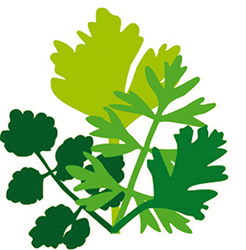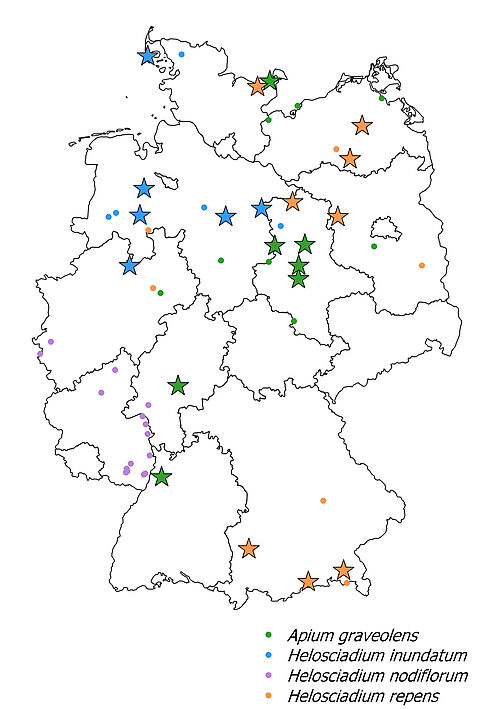Inhalt: Wild Celery Network
The Wild Celery Network
As a result of the project "Genetic Reserves for Wild Celery Species (Apium and Helosciadium) as Part of a Network of Genetic Reserves in Germany" (GE-Sell; duration: 2015 to 2019), the first European network of genetic reserves for wild relatives of our crops was established. Target species are the four wild celery species occurring in Germany. The established genetic reserves and their local stakeholders together form the Wild Celery Network.
During the project, plant populations were identified that maximize the intraspecific diversity of each of the four wild celery species in Germany. The coordination unit of the Wild Celery Network is currently establishing 45 genetic reserves for these species. The network of these genetic reserves aims at protecting the intraspecific diversity of the wild celeriac relatives.
Genetische Erhaltungsgebiete für Wildsellerie
Genetic reserves have already been established for three of the four species:
1. Apium graveolens L. subsp. graveolens
- near Ubstadt-Weiher in Baden-Württemberg
- near Sülldorf in Saxony-Anhalt
- near Hecklingen in Saxony -Anhalt
- near Nidda in Hessen
- near Heiligenhafen in Schleswig-Holstein
- near Zielitz in Saxony-Anhalt
- near Arendsee in Saxony-Anhalt
- near Weferlingen in Saxony-Anhalt
2. Helosciadium repens (Jacq.) W. D. J. Koch
- at Hohennauener See in Brandenburg
- near Chiemsee in Bavaria
- near Salgen in Bavaria
- at the Müritz in Mecklenburg-Western Pomerania
- near Lütjenburg in Schleswig-Holstein
- near river Weißach in Bavaria
- near Demmin in Mecklenburg-Western Pomerania
3. Helosciadium inundatum (L.) Koch
- near Warendorf in Nordrhein-Westfalen
- near Celle in Niedersachsen
- near Wittingen in Niedersachsen
- near Dinklage in Niedersachsen
- near Barneführer Holz in Niedersachsen
- on Amrum in Schleswig-Holstein
Data on wild celery occurrences for which genetic reserves have been established or are planned are available in the Inventory of Plant Genetic Resources (PGRDEU) of Germany.

